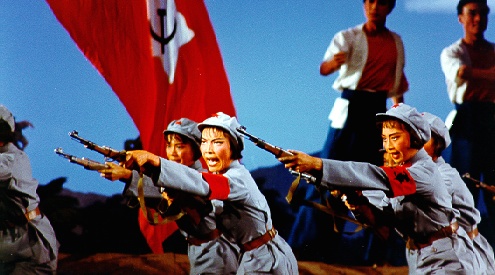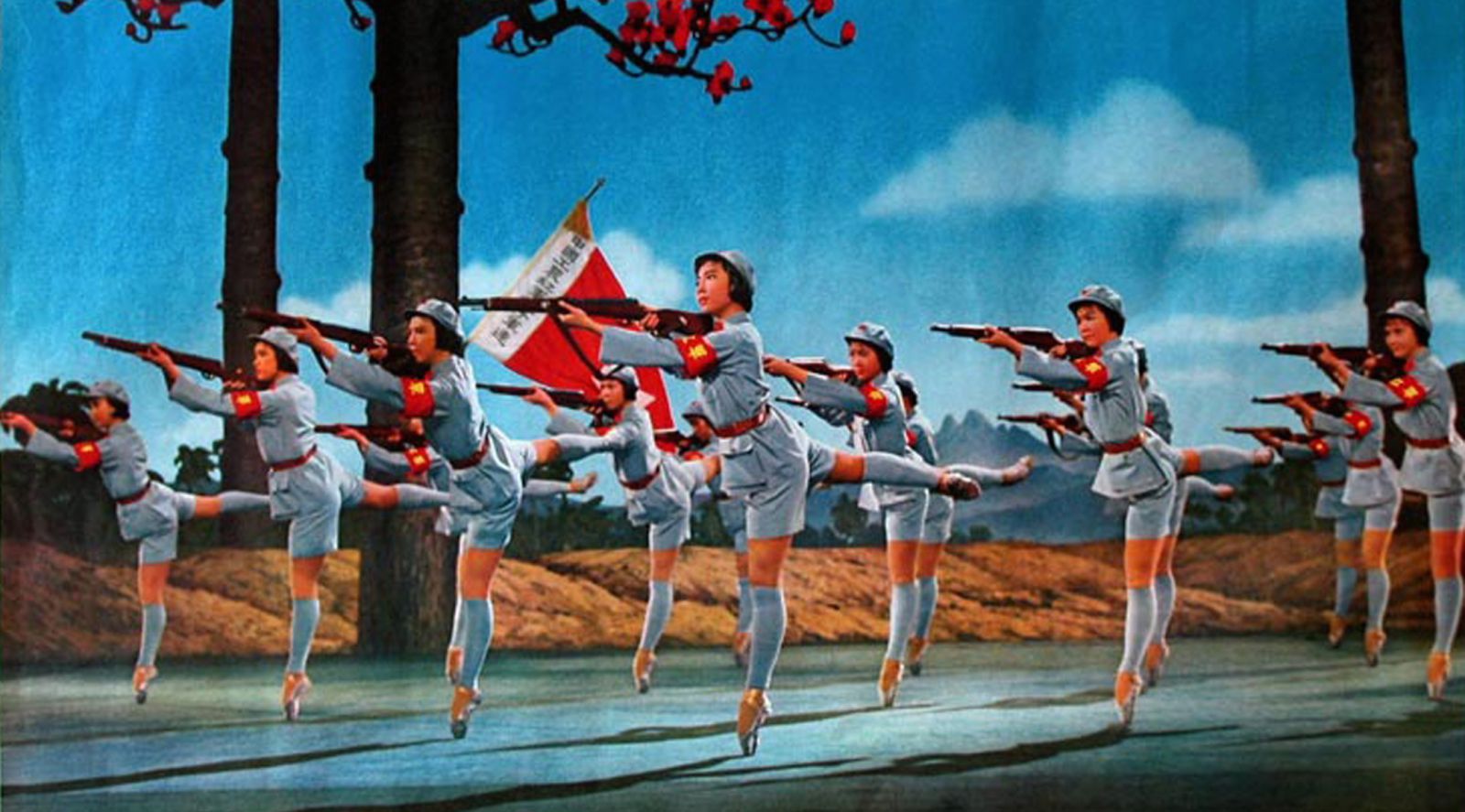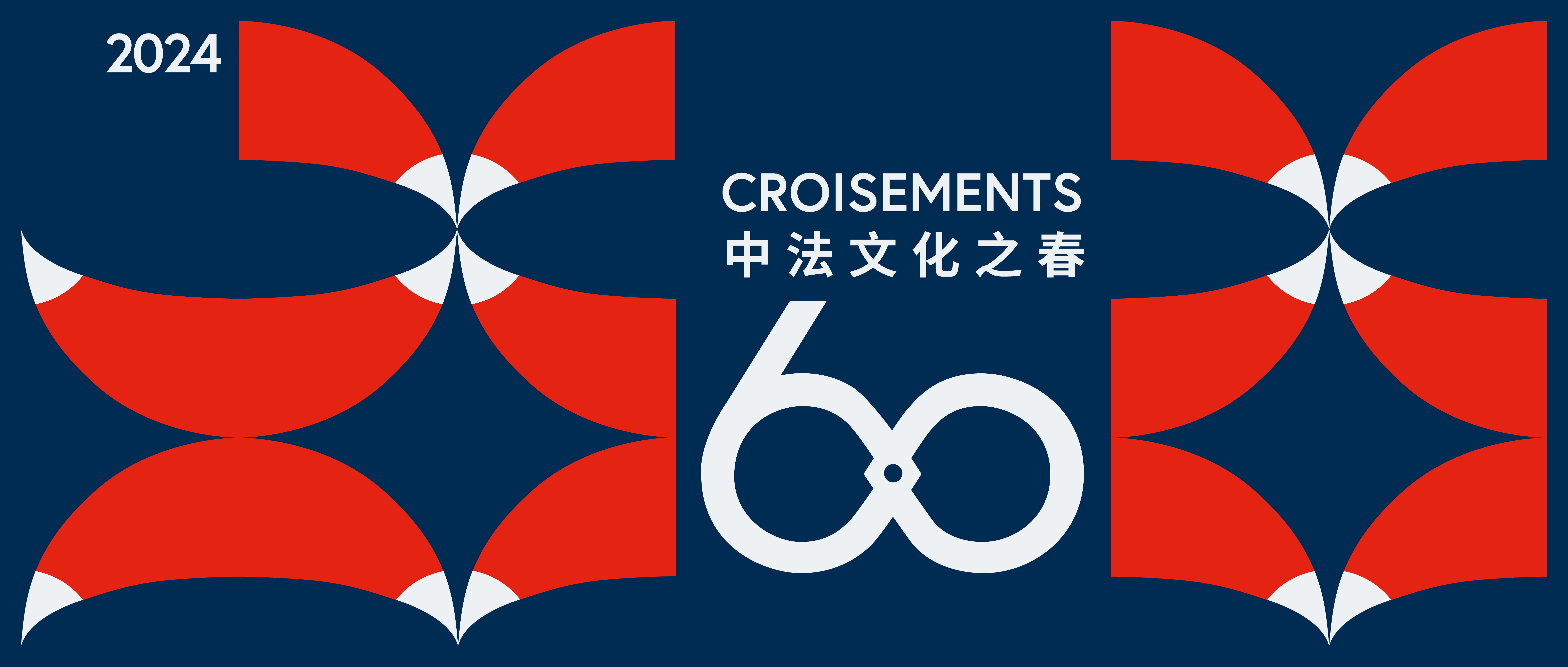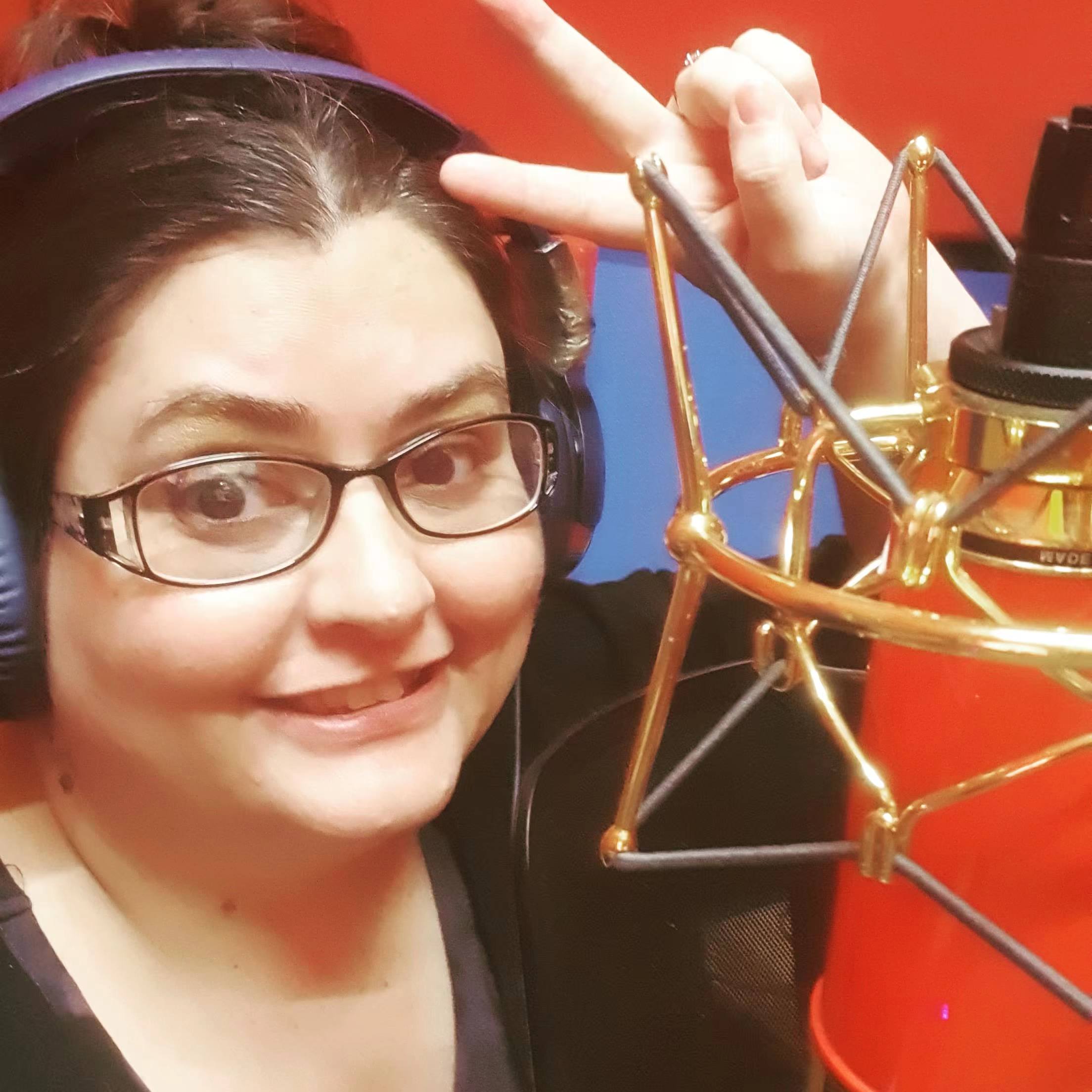When Mao Zedong declared traditional forms of theater to be bourgeois and feudalistic, he opened the doorway to a subgenre of theater known as revolutionary opera. Encapsulating the essence of the Cultural Revolution, they were designed to inspire and inform the proletariat in their glorious mission to reform China.
Overseen by Mao’s wife Jiang Qing, a former actress, yangbanxi were created that adhered to the government dogma of the time. Known in English as model plays, they quickly gained traction with the public – hardly surprising, since all art was strictly policed and few other stage works were permitted.
Initially, eight were created, sometimes canonized as the Eight Model Plays, consisting of five operas, two ballets and a symphony. These pieces were frequently performed and filmed, held up as the epitome of Communist drama during the Cultural Revolution. They were deemed so perfect that, in the most extreme cases, people straying from officially accepted versions were accused of being counterrevolutionaries and shot through the head.
READ MORE: The Eight Model Plays
Every aspect of life in China at the time was considered important to establishing a harmonious society, summed up by a piece of Party rhetoric: “The whole nation is a chessboard.” According to Professor Lan Fan of Shanghai University, a renowned author of books on theater, film and painting, this also essentially meant every aspect of life was under the control of the central committee, including drama. Thus, influential figures could justify extensive use of funds towards pet projects.

“A powerful person, Jiang Qing put artists from all over the country and as much money as needed toward the polishing of the model plays, which I bet is quite enviable for artists today!” says Lan.
Following the Gang of Four’s demise in 1976, the model plays fell from favor, but in recent times interest has revived, with productions attracting both nostalgic older generations and youngsters seeking to indulge their curiosity.
Fierce controversies rage over the aesthetic value of revolutionary opera. “Some say that, though the content is outdated, the plays have achieved supremacy in artistic creation, especially in evolving Peking opera,” explains Lan. “Others believe techniques can’t be judged separately from content… Whether those creations revolutionized or improved Peking opera is also under debate.”
The yangbanxi are notable for modernizing certain aspects of traditional opera. For instance, the melding of symphonic orchestras with Chinese instruments, bringing together violins and pianos with erhus and pipas.
On the other hand, propaganda was inherent in the productions and characterization was largely limited. “Take a look at the main figures, they don’t have a family life,” Lan points out. “No wife, no husband. They focus wholeheartedly on the revolution.”
.jpg)
Even physical appearance was used to prop up the Party: protagonists were always shown as tall, brave and heroic, striking bold poses and bathed warmly in spotlights. In contrast, antagonists were unflatteringly lit and made to look short and sly. Some sources claim Jiang Qing only allowed attractive comrades the opportunity to play good parts, while ugly or disfigured people were shoehorned into roles as Nationalists or Japanese invaders.
Full critiques of the model plays are stymied, which has limited a comprehensive evaluation. “Our criticism is still largely political, not artistic,” laments Lan. “To some extent, there are still forbidden zones.” While the works can be analyzed within themselves, to examine them within the background of the period or in an international context is still taboo.
Specters of those punished for making unapproved changes to the yangbanxi during the Cultural Revolution still hang over interpretations today, which largely stick to the traditional script. “What the audience sees today is still the original version of more than 30 years ago,” says Lan. “Nobody dares to mention adaptations of them.”
Considering the original aims of the Communist Revolution, it is interesting to hear Lan mention the monetary benefits of putting on revolutionary operas: the ticket sales are normally high; there are no expensive royalty fees to pay, as with imported plays; it’s much less costly and laborious than nurturing a fresh idea from scratch; and there’s little chance of the production getting nixed by authorities, provided it’s a faithful rendition.
“The model plays make things so easy. All troupes need to do is to teach some new dancers or actors with a video from the old times!”
[With files from Celine Song]





















0 User Comments